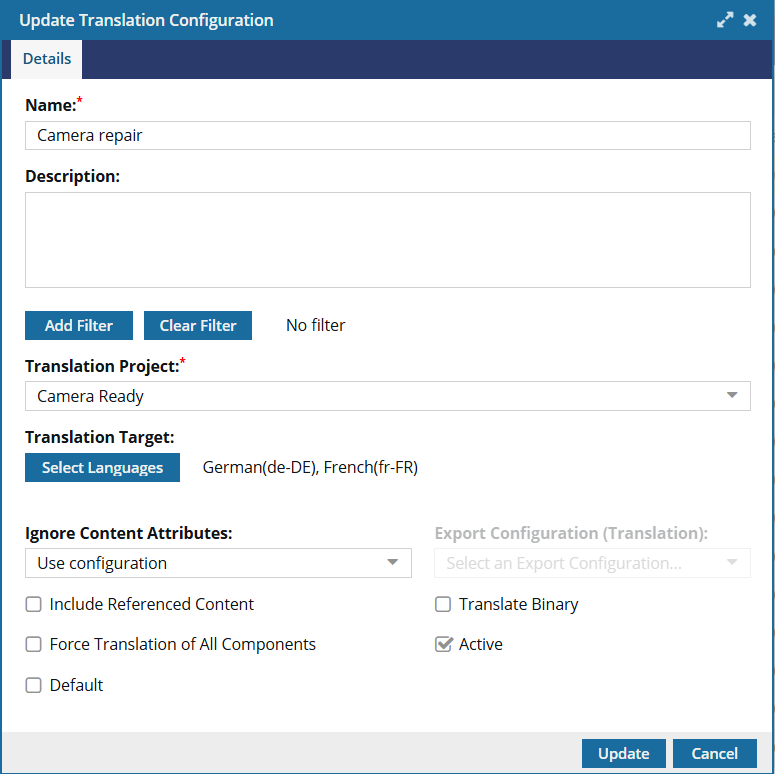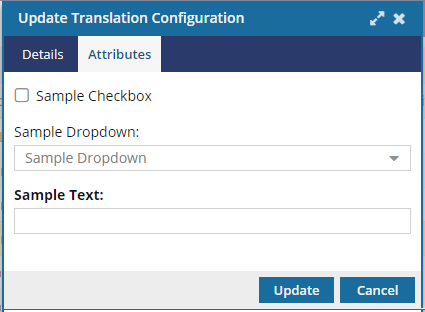Update a translation configuration
After you create a configuration to reuse a group of translation options repeatedly, you can update the configuration if you need to change the options or values.
 Tips and tricks
Tips and tricks
- You must be an Administrator to work with translation configurations.
- You can update as many options as you need in the configuration. Only Name and Translation Project are required.
- The values you set in the configuration are all used on the Translate Component screen, including for the Filter option which opens the Filter Profiling Attributes screen.
- The translation coordinator can override the settings in the translation configuration before clicking Translate.


 Project Director has been renamed to GlobalLink Enterprise.
Project Director has been renamed to GlobalLink Enterprise.

To update a translation configuration:
- Update translation configuration details.
- Optionally update any Attributes.
- On the Update Translation Configuration screen, click Update.
 Results:
Results:- The Update Translation Configuration screen closes.
- You see the new configuration in the list on the Translation Configuration tab.


Update translation configuration details
Optionally update any Attributes

 If you select a Translation Project that includes attributes, you see an Attributes tab.
If you select a Translation Project that includes attributes, you see an Attributes tab.
![]() If the vendor or project you select in Translation Project doesn't need attributes, you don't see an Attributes tab.
If the vendor or project you select in Translation Project doesn't need attributes, you don't see an Attributes tab.
 For more information on translation project attributes, read Send additional project details using attributes.
For more information on translation project attributes, read Send additional project details using attributes.

To update any optional Attributes:
- On the Update Translation Configuration screen, select the Attributes tab.
- To provide custom information for project types when content for translation, complete any custom fields on this tab. This information is unique to your company and customizable.

 Update.
Update. the Collapse down arrow next to the group names in bold. To see the languages in a group, click
the Collapse down arrow next to the group names in bold. To see the languages in a group, click  the Expand sideways arrow next to the group name in bold. Select a group to automatically include all the languages in the group.
the Expand sideways arrow next to the group name in bold. Select a group to automatically include all the languages in the group.